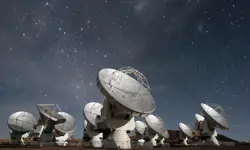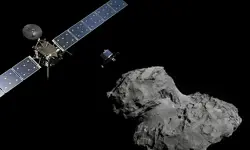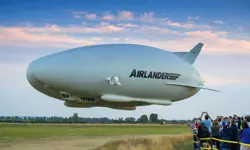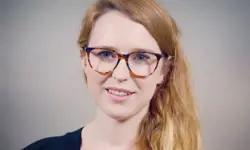
Q&A: Sinead O'Sullivan

Sinead is a multidisciplinary engineer, academic and writer.
Why did you first become interested in engineering?
I’ve always loved physics and maths, and loved playing team sports. When I was 15, I was given the opportunity to travel to NASA’s Johnson Space Center as part of a space camp. There, I met astronauts who were engineers, spoke different languages, played cool sports and were musicians in bands. It was the first time I really learned what engineers do, and how multidisciplinary it is as a job. I learned that I could do all the things I enjoyed most, at the same time, through engineering.
How did you get to where you are now?
Within engineering, I have always been focused on aerospace, specifically the space sector. I did my Bachelor of Aerospace Engineering at Queen’s University Belfast, where I focused on unmanned aerial vehicle (UAV) design and build. After a couple of years working in a computer science role, I attended the International Space University in France where I gained experience in satellite constellation design as well as human spaceflight and astronaut missions.
For a few years I then worked as a researcher at the Aerospace Systems Design Laboratory (ASDL), an academic research laboratory in the US, where I managed two separate human spaceflight mission design projects for NASA (one to Mars and one to an asteroid). I also worked on underwater and autonomous robotics for the US Navy, drones and some UAV policy research.
After ASDL, I moved to Harvard Business School to pursue my MBA. I was sponsored by the Royal Academy of Engineering as a Sainsbury Management Fellow, which allowed me to get rigorous management training that I could apply to the engineering sector. I really enjoy the mix of engineering, management and academia and have stayed with one foot in research and one foot in engineering since.
What has been your biggest achievement to date?
There are several projects that I’ve worked on that have brought about large personal satisfaction, but I think the most rewarding aspect of what I’ve done is mentor and watch younger talent make an impact in the space sector. I run several initiatives to engage with younger or aspiring engineers. I was very fortunate to have had a lot of guidance myself, so I understand the impact that it can have when making decisions about education or career planning.
There’s a lot of exceptional talent in the UK and it’s amazing to see some of the students I’ve mentored being recognised on an international level.
What is your favourite thing about being an engineer?
Engineering is a team-orientated industry, and by far my favourite aspect of engineering is the people. The engineers that I’ve been lucky enough to work with have all been incredibly passionate about the space industry and are relentless in their drive to further understand and discover our solar system. The space industry is also one of the most inclusive communities I’ve come across yet – diversity is celebrated and actively contributes to the high levels of innovative technologies being created. One of the coolest teams I worked on included a robotics programmer who was blind, and we created very novel ways of working together to create an amazing outcome.
What does a typical day at work involve for you?
There is no typical day, which is why I love my job! On the research side, I read a lot, sometimes up to 40 papers or journal articles a week. I then find other academics to use as a sounding board to try to digest and make sense of the subject matter. Since my work is highly interdisciplinary I often look to other fields for inspiration to tie together my ideas, so I spend time reading philosophy, in art galleries or attending more artistic lectures to widen my thinking.
In terms of commercialising my research, I spend a lot of time with my co-founder who is developing the underlying technology, working with investors and lawyers to create a viable business entity, and with customers to develop a product that has a positive, long-term impact.
Since my work is highly interdisciplinary I often look to other fields for inspiration to tie together my ideas, so I spend time reading philosophy, in art galleries or attending more artistic lectures to widen my thinking
What first gave you the idea for your technology?
I have an interest in macro-economics, particularly the evolving form of democracy in an increasingly digital world. I spend a lot of time discussing ideas around digital democracy with colleagues at the Harvard Kennedy School of Government, where I am a member of the British and Irish Caucus.
I met my technology co-founder when I was giving a lecture at Georgetown University in Washington DC on space economics, and we decided to create a set of tools that could effectively monitor real-time interference in democratic elections. Fast forward a few months, and we are actively monitoring the US mid-term elections as well as having recently monitored the UK local elections in May.
How would you encourage other young engineers to develop their own technologies?
There are a million and one ways to develop new technologies. However, I would suggest starting with a real-life problem that you have experience with – if it is meaningful to you, you will be able to create a more meaningful solution that others will want to adopt. Developing something new that has not been done before is very difficult, and it’s natural to get frustrated along the way. But if you take enjoyment from learning and can iteratively improve on your idea you will get much better at the process of technology creation, which is an enormous skill.
I would suggest starting with a real-life problem that you have experience with – if it is meaningful to you, you will be able to create a more meaningful solution that others will want to adopt
Quick-fire facts
Age:
29
Qualifications:
Bachelor of Aerospace Engineering, Certificate of Space Studies, Master of Aerospace Engineering, Master of Business Administration
Most-used technology:
The Audible app on my phone, where I can download and listen to millions of audiobooks.
Three words that describe you:
Tenacious, empathetic and curious
What would be your advice to young people looking to pursue a career in engineering?
A degree in engineering provides you with an analytical framework that can be used to solve problems in any field, whether it’s science, engineering, business, finance or even languages. Within the engineering sector there are so many different types of industries, all of which have many opportunities that can provide dynamic and exciting career prospects. My own career was not a straight line from my engineering undergrad to where I am now, so my advice would be to experiment within engineering and technology and learn new skills as you go along.
What’s next for you?
Within academia, I am hoping to continue my involvement in the space and business areas; the industry is really taking off (or should I say blasting off!) and it’s a fascinating time to be involved. With my new technology venture I am opening a UK and European capability, so I am looking forward to becoming more involved with the UK technology sector. Outside of work I am about to start building an amateur rocket that will be launched up to 30,000 feet in Europe in November, so I am definitely looking forward to being more hands-on for the next few months.
***
To find out more about Sinead and her projects, visit her website.
This article has been adapted from "Q&A: Sinead O'Sullivan", which originally appeared in the print edition of Ingenia 76 (September 2018).
Keep up-to-date with Ingenia for free
SubscribeRelated content
Aerospace

ALMA – the high altitude observatory
The Atacama Large Millimetre/submillimetre Array (ALMA) is the largest and most expensive ground-based telescope built, revolutionising our understanding of stars and planetary systems. Building it in the Atacama Desert in Chile required the ingenuity of hundreds of engineers.

Communicating with outer space
The Royal Academy of Engineering awarded a team at BAE Systems the Major Project Award in June 2016 for their development of a powerful satellite modem system, pivotal in enabling the precise control of the pioneering Rosetta spacecraft and the first-ever soft landing of a spacecraft on a comet.

An aircraft like no other
The Airlander made headlines when it embarked on its first test flight in August 2016 as the world’s largest aircraft. Chris Daniels at Hybrid Air Vehicles Limited, and David Burns, Airlander’s Chief Test Pilot, talk about the engineering that helped it reach this stage and plans for the craft’s future.

Q&A: Lucy Harden
Lucy Harden is a mechanical engineer on BAE Systems’ Digital Light Engine Head-Up Display development programme. She devises innovative solutions for pilots to display essential flight information that sits directly in their line of sight and is overlaid onto the real world.
Other content from Ingenia
Quick read

- Environment & sustainability
- Opinion
A young engineer’s perspective on the good, the bad and the ugly of COP27

- Environment & sustainability
- Issue 95
How do we pay for net zero technologies?
Quick read

- Transport
- Mechanical
- How I got here
Electrifying trains and STEMAZING outreach

- Civil & structural
- Environment & sustainability
- Issue 95